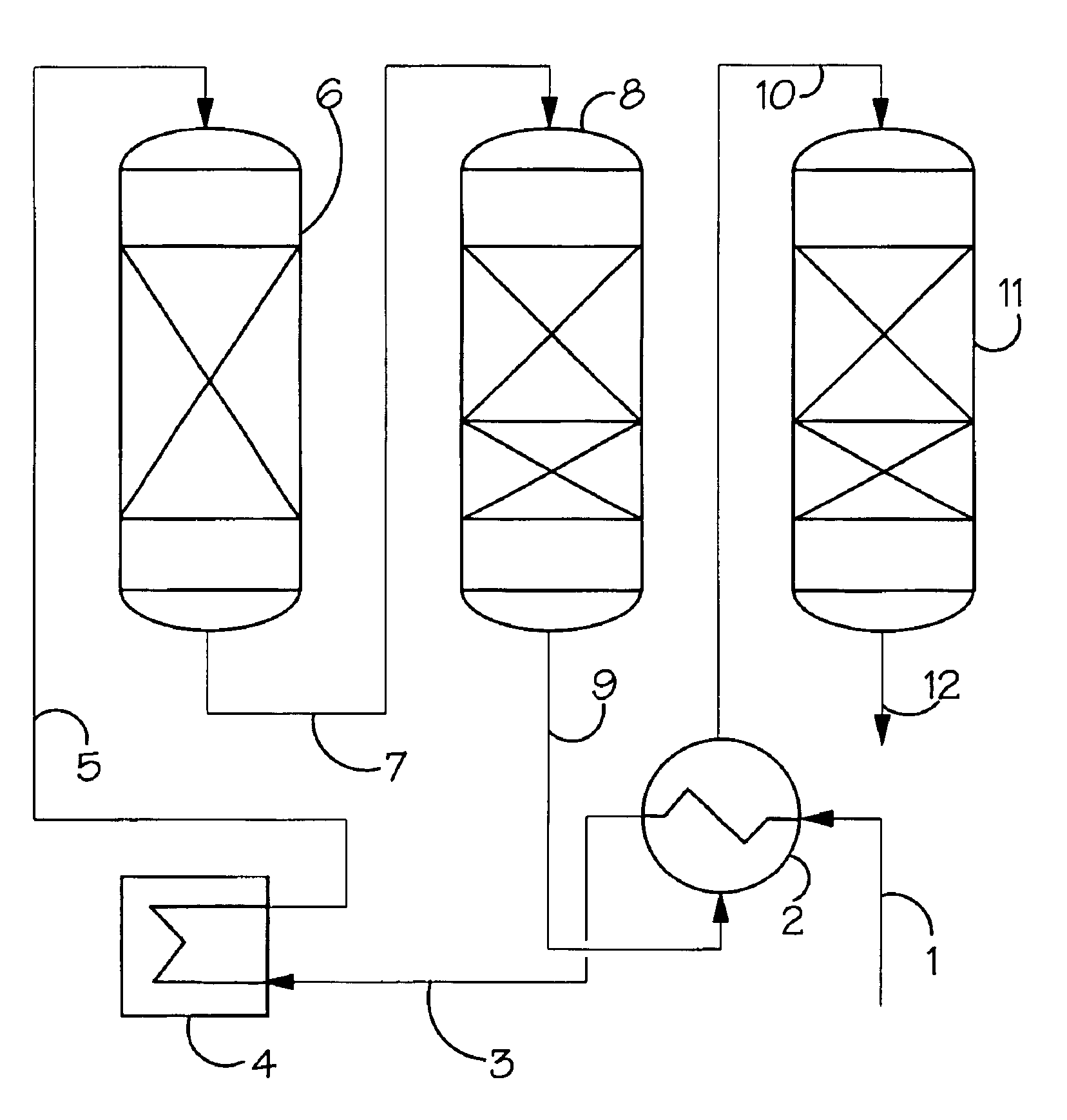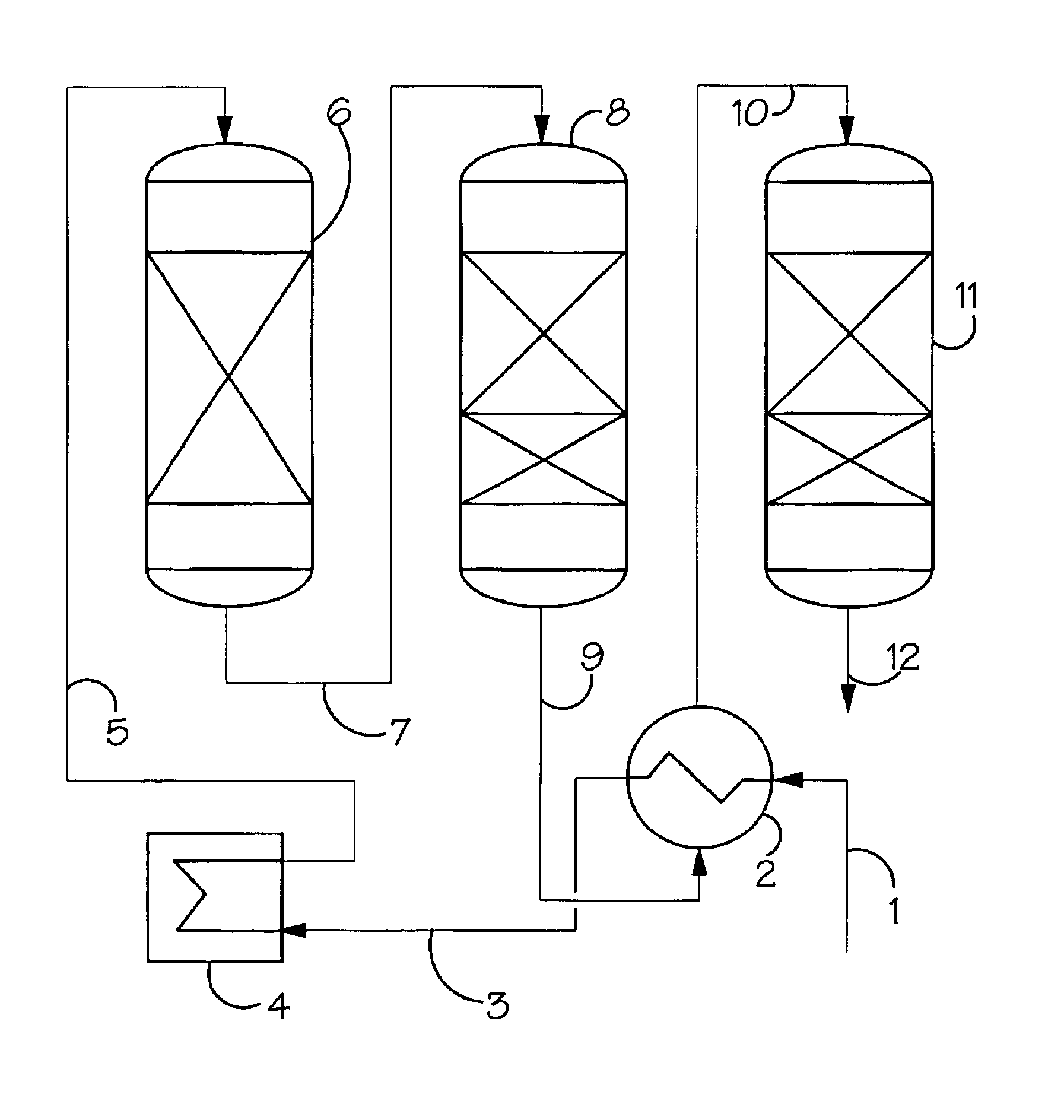Process for the desulphurization of feed streams
a technology of desulphurization process and feed stream, which is applied in the direction of separation process, hydrogen sulfide, machine/engine, etc., can solve the problems of not being suitable for hot feed treatment, not being able to meet modern requirements, and not being able to achieve desulphurization at a sufficiently low level, so as to reduce the amount of sulphur present, reduce the effect of sulphur content and operation less efficien
- Summary
- Abstract
- Description
- Claims
- Application Information
AI Technical Summary
Benefits of technology
Problems solved by technology
Method used
Image
Examples
Embodiment Construction
[0039]As illustrated in FIG. 1, a feedstock, such as a natural gas feedstock, is fed via line 1 to a gas / gas interchanger 2 where it is used to cool the hot partially sulphur depleted stream exiting the lead catalyst bed as described below.
[0040]The feed is then passed in line 3 to a desulphurisation interchanger 4 where the stream is heated. The heated stream is then passed in line 5 to an optional desulphurisation reactor 6.
[0041]The hot stream is then passed in line 7 to the lead catalyst bed 8 which will comprise an upper layer of zinc oxide and a lower layer of an ultra-purification catalyst. The bed will be operated at a temperature in the range of from about 260° C. to about 420° C. The zinc oxide will remove sulphur from the stream to an appreciable amount, typically down to 10 ppb at the start of its operation, but may be rising to 10 ppm at the end of its operating life.
[0042]The thus depleted stream, is then passed in line 9 to the interchanger 2 where it is cooled agains...
PUM
| Property | Measurement | Unit |
|---|---|---|
| temperature | aaaaa | aaaaa |
| temperature | aaaaa | aaaaa |
| temperature | aaaaa | aaaaa |
Abstract
Description
Claims
Application Information
 Login to View More
Login to View More - R&D
- Intellectual Property
- Life Sciences
- Materials
- Tech Scout
- Unparalleled Data Quality
- Higher Quality Content
- 60% Fewer Hallucinations
Browse by: Latest US Patents, China's latest patents, Technical Efficacy Thesaurus, Application Domain, Technology Topic, Popular Technical Reports.
© 2025 PatSnap. All rights reserved.Legal|Privacy policy|Modern Slavery Act Transparency Statement|Sitemap|About US| Contact US: help@patsnap.com


